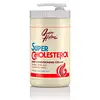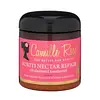What's inside
What's inside
 Benefits
Benefits

 Concerns
Concerns

 Ingredients Side-by-side
Ingredients Side-by-side

Water
Skin ConditioningGlyceryl Stearate
EmollientParaffinum Liquidum
EmollientStearyl Alcohol
EmollientLanolin
EmollientMyristamidopropyl Dimethylamine Phosphate
CleansingGlycerin
HumectantPropylene Glycol
HumectantAloe Barbadensis Leaf Juice
Skin ConditioningCeteth-24
CleansingCetrimonium Chloride
AntimicrobialCholeth-24
EmulsifyingDisodium EDTA
Keratin Amino Acids
Skin ConditioningMethylparaben
PreservativePhenoxyethanol
PreservativeBenzyl Salicylate
PerfumingParfum
MaskingCI 17200
Cosmetic ColorantCI 16035
Cosmetic ColorantCI 47005
Cosmetic ColorantWater, Glyceryl Stearate, Paraffinum Liquidum, Stearyl Alcohol, Lanolin, Myristamidopropyl Dimethylamine Phosphate, Glycerin, Propylene Glycol, Aloe Barbadensis Leaf Juice, Ceteth-24, Cetrimonium Chloride, Choleth-24, Disodium EDTA, Keratin Amino Acids, Methylparaben, Phenoxyethanol, Benzyl Salicylate, Parfum, CI 17200, CI 16035, CI 47005
Ingredients Explained
These ingredients are found in both products.
Ingredients higher up in an ingredient list are typically present in a larger amount.
Aloe Barbadensis Leaf Juice comes from leaves of the aloe plant. Aloe Barbadensis Leaf Juice is best known for helping to soothe sunburns. It is also anti-inflammatory, moisturizing, antiseptic, and can help heal wounds.
Aloe is packed with good stuff including Vitamins A, C, and E. These vitamins are antioxidants, which help fight free-radicals and the damage they may cause. Free-radicals are molecules that may damage your skin cells, such as pollution.
Aloe Barbadensis Leaf Juice also contains sugars. These sugars come in the form of monosaccharides and polysaccharides, folic acid, and choline. These sugars are able to help bind moisture to skin.
It also contains minerals such as calcium, 12 anthraquinones, fatty acids, amino acids, and Vitamin B12.
Learn more about Aloe Barbadensis Leaf JuiceGlycerin is already naturally found in your skin. It helps moisturize and protect your skin.
A study from 2016 found glycerin to be more effective as a humectant than AHAs and hyaluronic acid.
As a humectant, it helps the skin stay hydrated by pulling moisture to your skin. The low molecular weight of glycerin allows it to pull moisture into the deeper layers of your skin.
Hydrated skin improves your skin barrier; Your skin barrier helps protect against irritants and bacteria.
Glycerin has also been found to have antimicrobial and antiviral properties. Due to these properties, glycerin is often used in wound and burn treatments.
In cosmetics, glycerin is usually derived from plants such as soybean or palm. However, it can also be sourced from animals, such as tallow or animal fat.
This ingredient is organic, colorless, odorless, and non-toxic.
Glycerin is the name for this ingredient in American English. British English uses Glycerol/Glycerine.
Learn more about GlycerinPhenoxyethanol is a preservative that has germicide, antimicrobial, and aromatic properties. Studies show that phenoxyethanol can prevent microbial growth. By itself, it has a scent that is similar to that of a rose.
It's often used in formulations along with Caprylyl Glycol to preserve the shelf life of products.